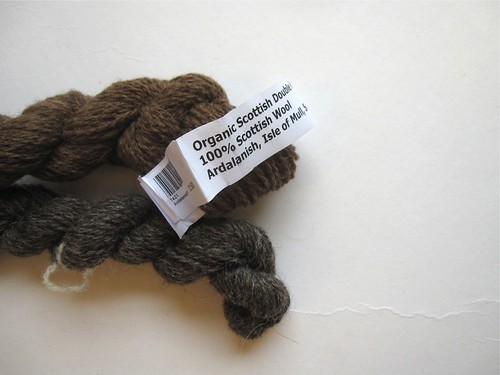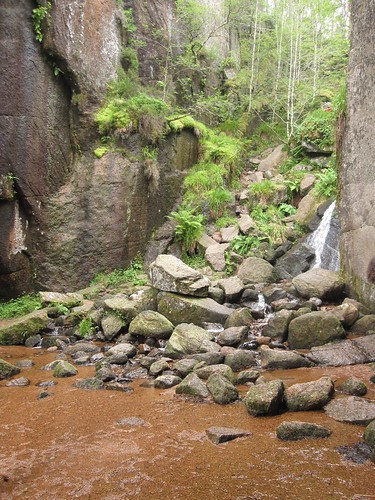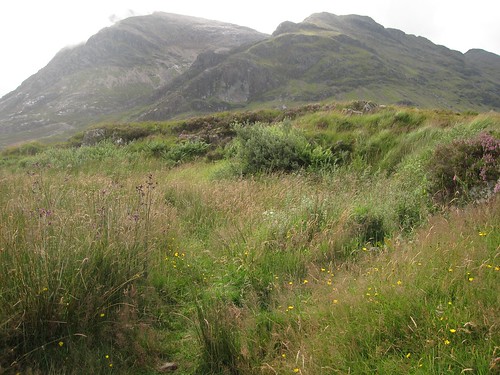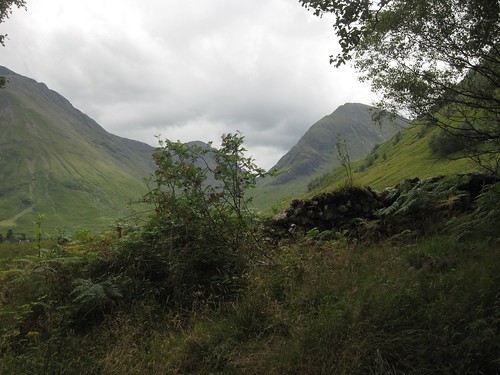Turns out that Shetland was a little farther away than I was envisioning. I'd imagined a two- or three-hour boat ride that would whisk me from Aberdeen or Inverness to Lerwick. There'd a cabin below where I could order tea and sandwiches, and a deck above where I could gaze out to the horizon, the cold winds off the North Sea romantically blowing through my hair. I'd pass the time knitting, of course. It's funny now how easily my imagination plucked up the San Francisco-to-Sausalito ferry route from my memory and filled the surroundings with a colder ocean and less landmass.
In doing my research on the web, I found that while the British Isles might be small in comparison to the USA, they weren't quite as small as I'd thought. The city of Aberdeen is located about a four hours' drive from our resort. The actual ferry from Aberdeen to Lerwick departs at either 5PM or 7PM (depending on the day of the week), and arrives at 7:30AM the next morning. The see-all-the-sights travel planner in me couldn't bear to give up so much time to sitting in transit when there was the entire rest of Scotland to see. Oh well. I'd still find me some yarn.
 |
| This store does not sell yarn. Sad face. |
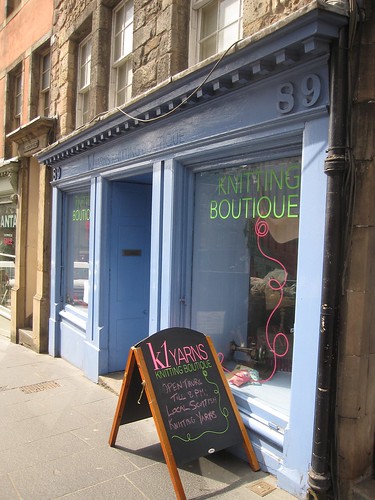 |
| This place DOES sell yarn! |
While walking through Edinburgh, I was on a mission. After we located the shop, two of my traveling companions graciously agreed to entertain themselves in a nearby cheese shop. The fourth companion came with me, to purchase souvenir yarn for his girlfriend. The person working at the shop was wonderfully helpful, assisting him in choosing yarn that she wouldn't be able to find in the US, which left me free to browse around myself. I, too, was on the lookout for yarn that I wouldn't just find on the shelf of my LYS. I was also nearly finished with my Neep Heid hat, and had my eye open for yarn that would work in either of the other two patterns in Kate Davies' fantastic e-booklet The Hats of Midlothian. I found yarn of roughly the right weight from The Isle of Harris Knitwear Co., and settled down to choose colors.

All four of these are heathery yarns, and my photography doesn't do justice to the deep marine-blue-green of the ball in the lower left. After I'd picked out these shades, I spied something really special in a little basket next to the Jamieson's yarns:
The labels look as though they were printed at home and snipped into strips, which I love. I'm not exactly sure, but I'm betting that these colors are undyed, the natural colors of the sheep raised on the Isle of Mull. They had to come home with me as well. I can't wait to spend a day with all my crunchy, wooly, Shetland-y yarn playing around with color combinations!
In the midst of my yarn adventures, there also turned out to be some fabric adventures in Scotland. I've decided that they need their own (shorter) post, so that'll come up soon after I share a few finished projects with you guys.
